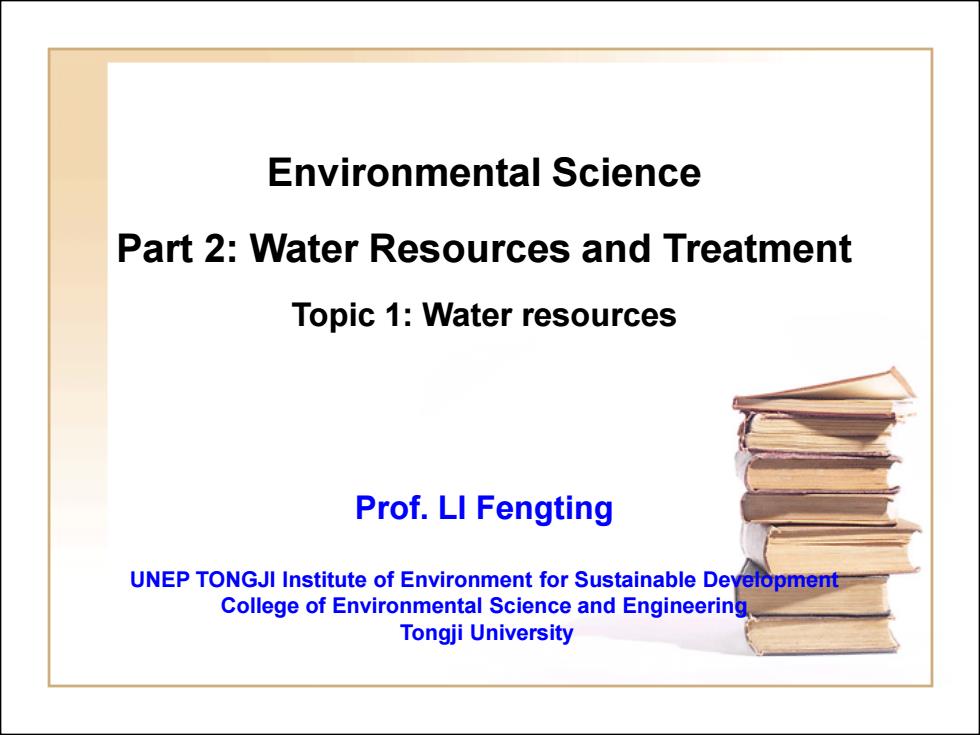
Environmental Science Part 2:Water Resources and Treatment Topic 1:Water resources Prof.LI Fengting UNEP TONGJI Institute of Environment for Sustainable Development College of Environmental Science and Engineering Tongji University
Environmental Science Part 2: Water Resources and Treatment Topic 1: Water resources Prof. LI Fengting UNEP TONGJI Institute of Environment for Sustainable Development College of Environmental Science and Engineering Tongji University
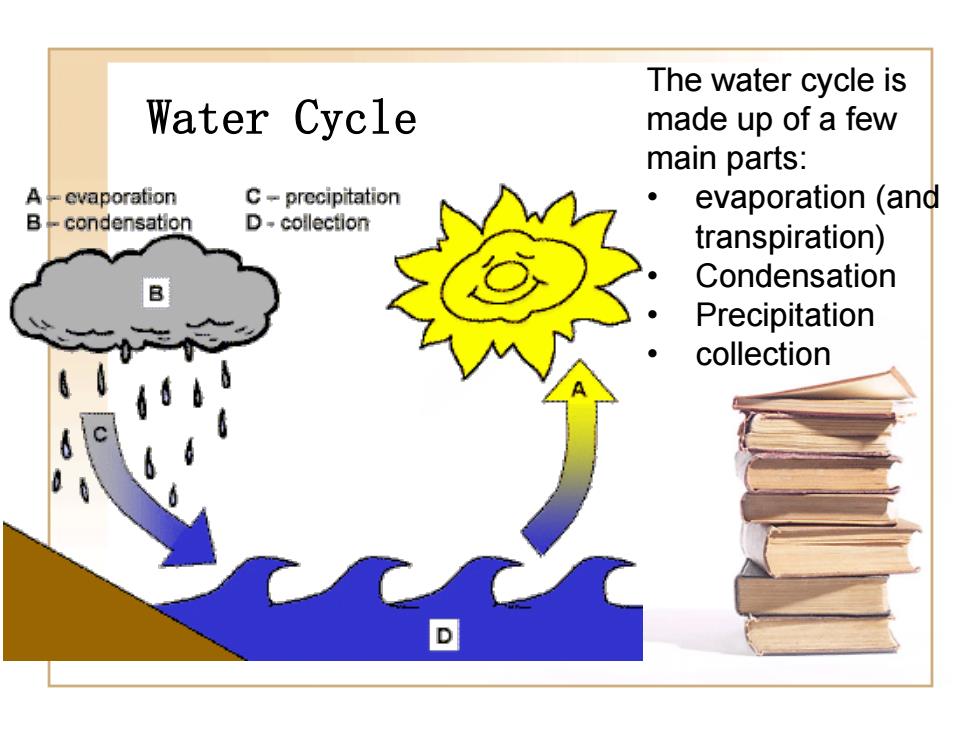
The water cycle is Water Cycle made up of a few main parts: A-evaporation C-precipitation evaporation (and B-condensation D-collection transpiration) Condensation Precipitation collection D
Water Cycle The water cycle is made up of a few main parts: • evaporation (and transpiration) • Condensation • Precipitation • collection
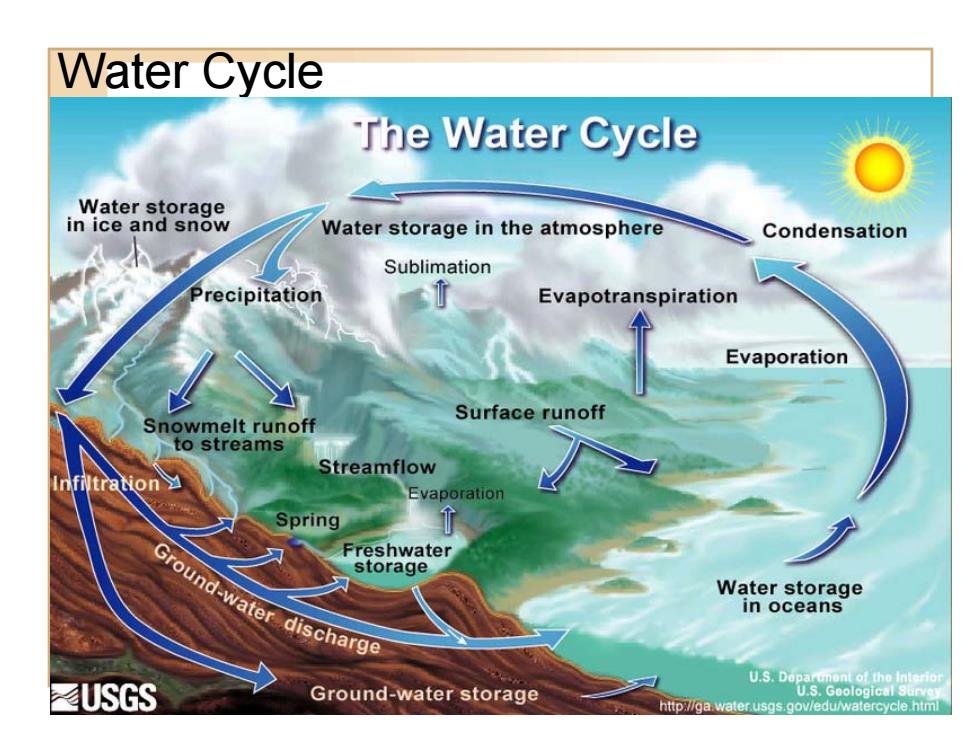
Water Cycle The Water Cycle Water storage in ice and snow Water storage in the atmosphere Condensation Sublimation Precipitation Evapotranspiration Evaporation Surface runoff Snowmelt runoff to streams Streamflow Evaporation Spring Ground-water discharge Freshwater storage Water storage in oceans U.S.Dopartmont of the Interio ≤USGS Ground-water storage U.S.Goological Suirve nttp://ga water.usgs.gov/edu/watercycle.html
Water Cycle
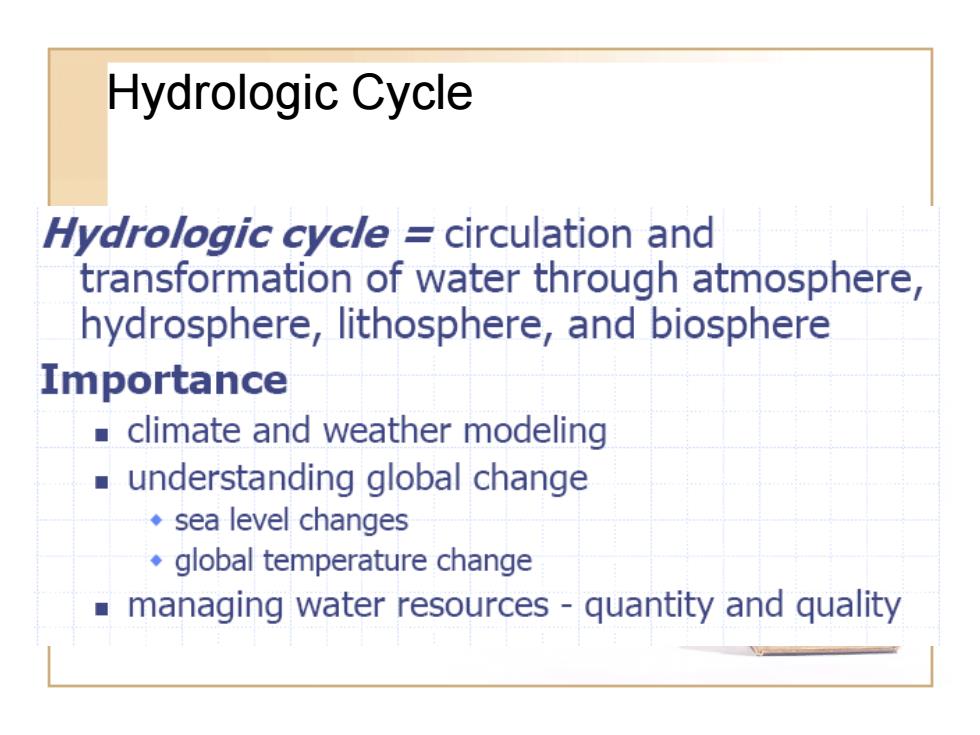
Hydrologic Cycle Hydrologic cycle circulation and transformation of water through atmosphere, hydrosphere,lithosphere,and biosphere Importance climate and weather modeling understanding global change ◆sea level changes global temperature change managing water resources-quantity and quality
Hydrologic Cycle
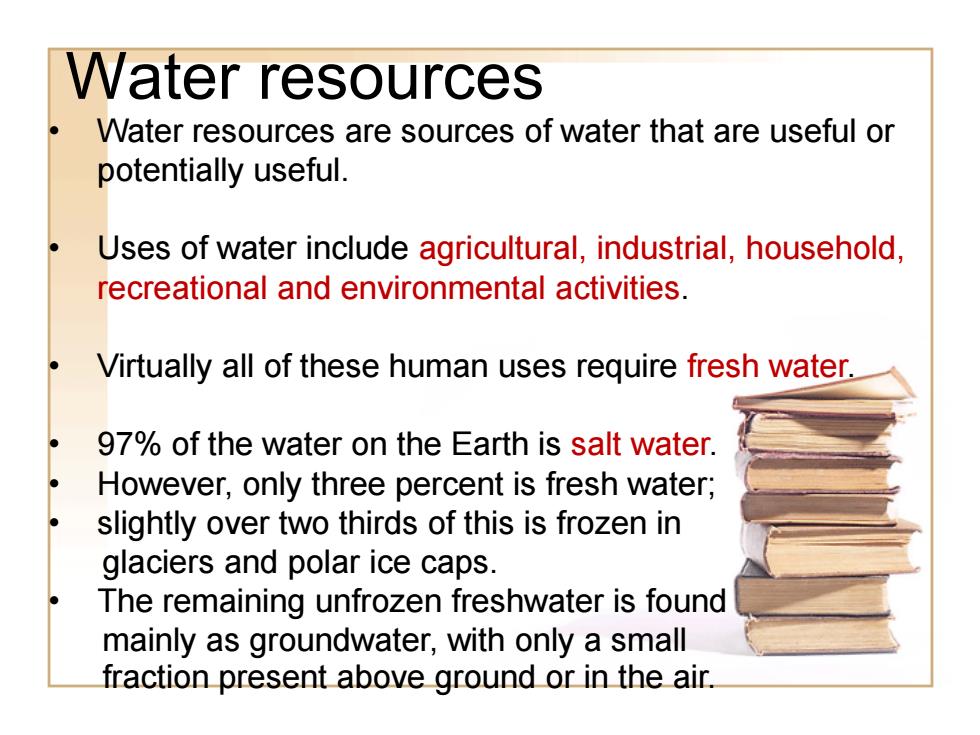
Water resources Water resources are sources of water that are useful or potentially useful. Uses of water include agricultural,industrial,household, recreational and environmental activities. Virtually all of these human uses require fresh water. 97%of the water on the Earth is salt water. ● However,only three percent is fresh water; slightly over two thirds of this is frozen in glaciers and polar ice caps. The remaining unfrozen freshwater is found mainly as groundwater,with only a small fraction present above ground or in the air
Water resources • Water resources are sources of water that are useful or potentially useful. • Uses of water include agricultural, industrial, household, recreational and environmental activities. • Virtually all of these human uses require fresh water. • 97% of the water on the Earth is salt water. • However, only three percent is fresh water; • slightly over two thirds of this is frozen in glaciers and polar ice caps. • The remaining unfrozen freshwater is found mainly as groundwater, with only a small fraction present above ground or in the air